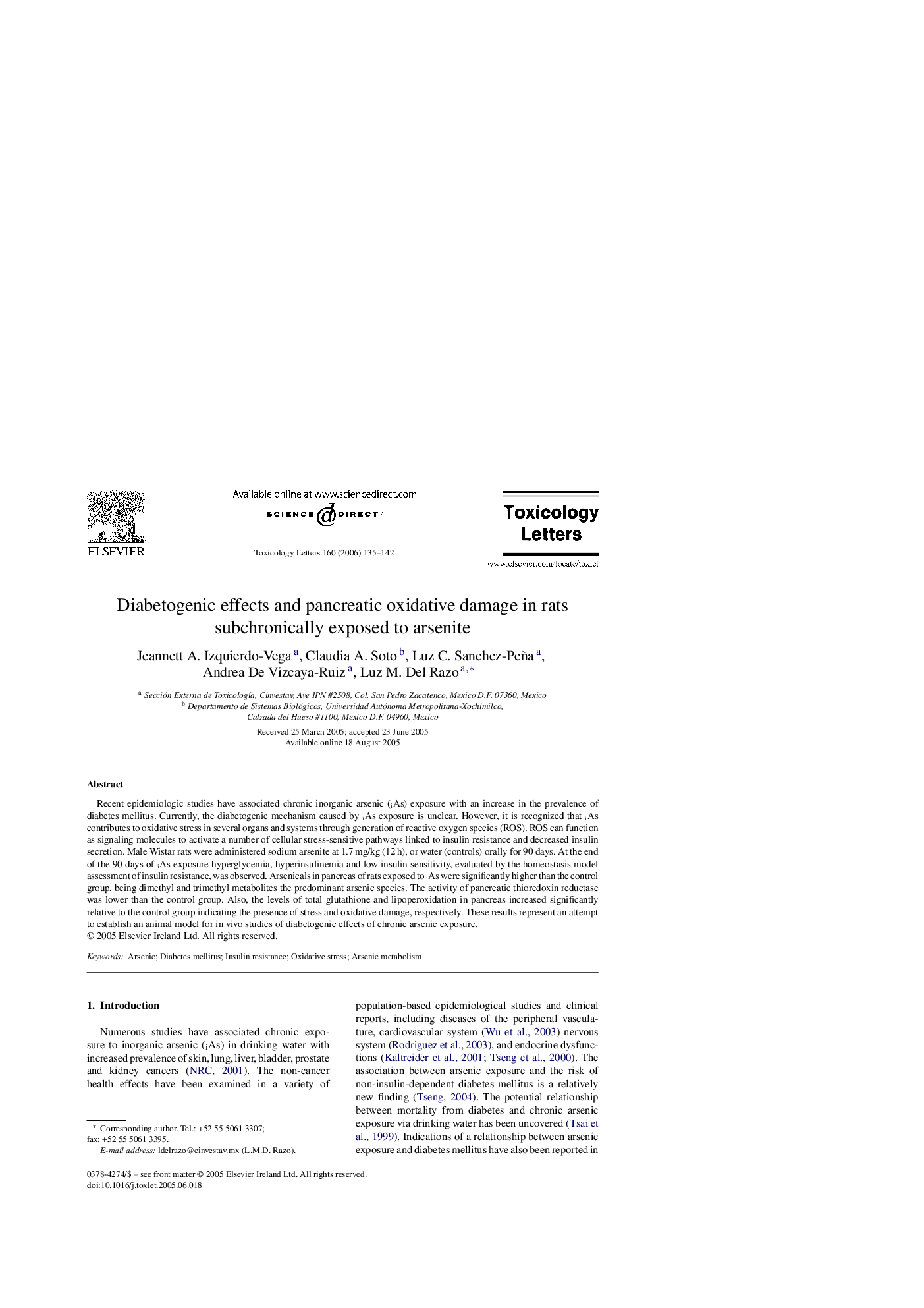| Article ID | Journal | Published Year | Pages | File Type |
|---|---|---|---|---|
| 2602130 | Toxicology Letters | 2006 | 8 Pages |
Recent epidemiologic studies have associated chronic inorganic arsenic (iAs) exposure with an increase in the prevalence of diabetes mellitus. Currently, the diabetogenic mechanism caused by iAs exposure is unclear. However, it is recognized that iAs contributes to oxidative stress in several organs and systems through generation of reactive oxygen species (ROS). ROS can function as signaling molecules to activate a number of cellular stress-sensitive pathways linked to insulin resistance and decreased insulin secretion. Male Wistar rats were administered sodium arsenite at 1.7 mg/kg (12 h), or water (controls) orally for 90 days. At the end of the 90 days of iAs exposure hyperglycemia, hyperinsulinemia and low insulin sensitivity, evaluated by the homeostasis model assessment of insulin resistance, was observed. Arsenicals in pancreas of rats exposed to iAs were significantly higher than the control group, being dimethyl and trimethyl metabolites the predominant arsenic species. The activity of pancreatic thioredoxin reductase was lower than the control group. Also, the levels of total glutathione and lipoperoxidation in pancreas increased significantly relative to the control group indicating the presence of stress and oxidative damage, respectively. These results represent an attempt to establish an animal model for in vivo studies of diabetogenic effects of chronic arsenic exposure.
